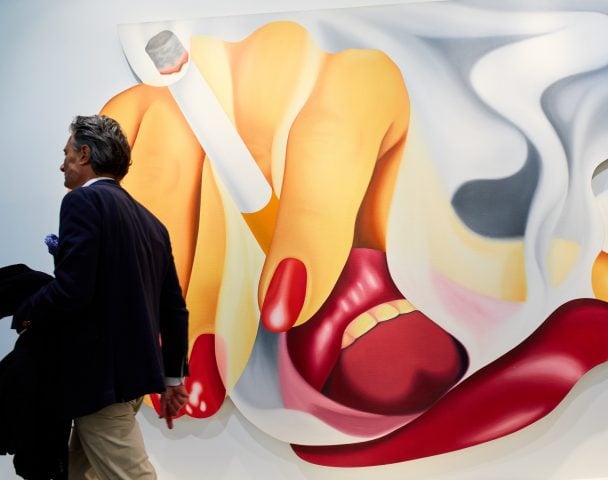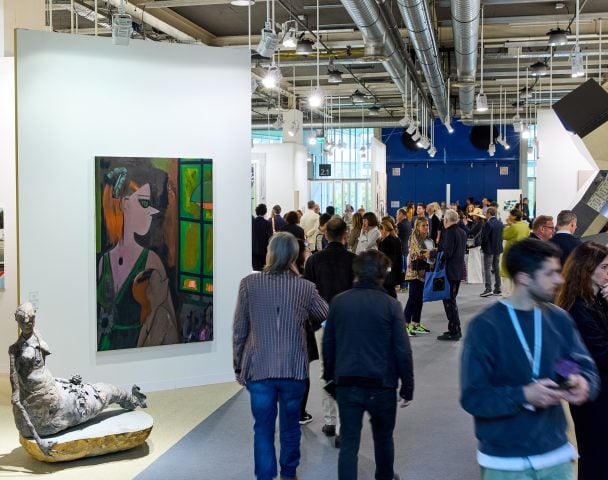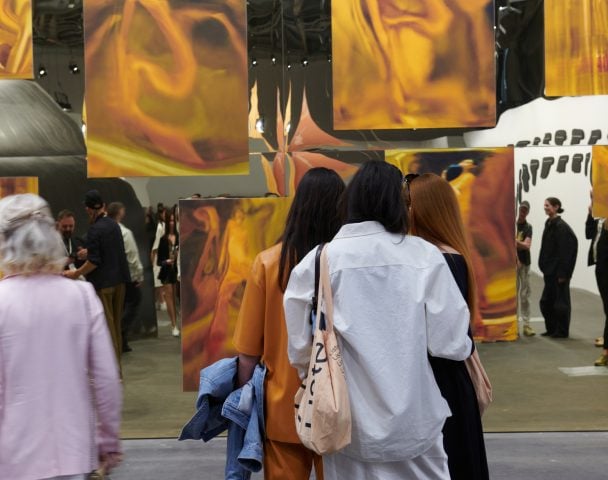Archaeology & History
See the Precious Artifacts Unearthed at a Giant Roman Necropolis in France
The relics include ceramics, jewelry, ossuary chests, and marble altars.
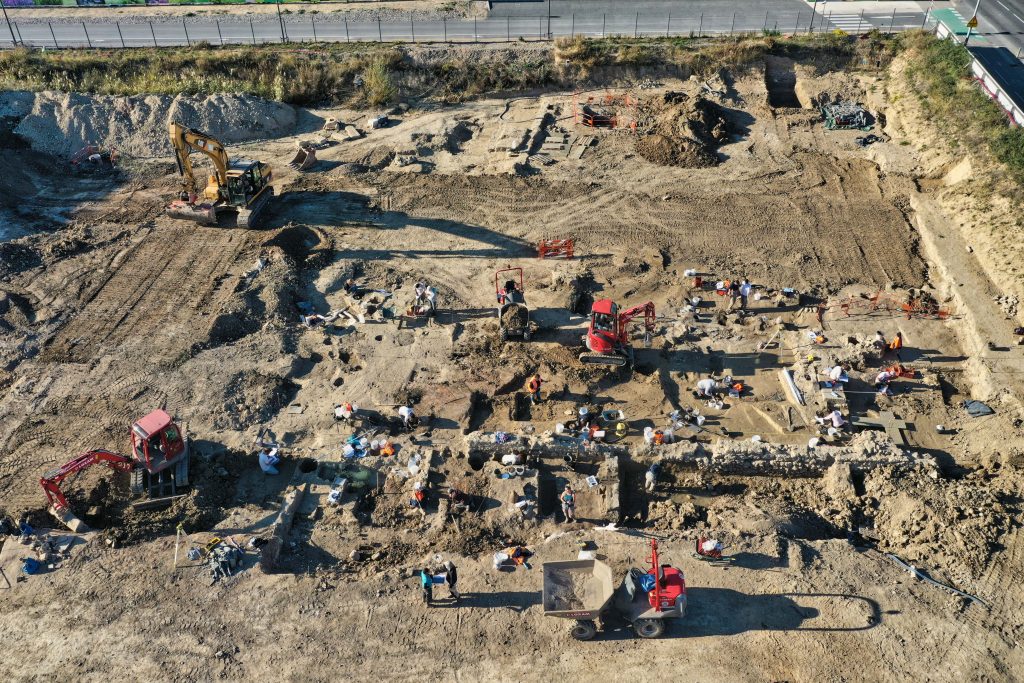
Between 2017 and 2020, archeologists from the French National Institute for Preventive Archeological Research (INRAP) excavated a proposed construction site near the city of Narbonne in southern France. To the delight of the archaeologists—and the possible dismay of the developers—the excavation unearthed more than 1,880 structures dated to the earliest days of the Roman Empire. Together, they formed one of the biggest necropolises in the region.
Located less than four miles outside the city—founded in 118 B.C.E. as the first Roman settlement in Transalpine Gaul and originally called Narbo Martius—the necropolis appears to have been used from the end of the 1st century C.E. up until the beginning of the 3rd century. Several plots of land are surrounded by high walls and decorated with marble funerary plaques with information about the necropolis’ population, which mainly consisted of plebeians or members of the working class: former slaves of Italian origin who settled in Narbonne in search of economic opportunity.
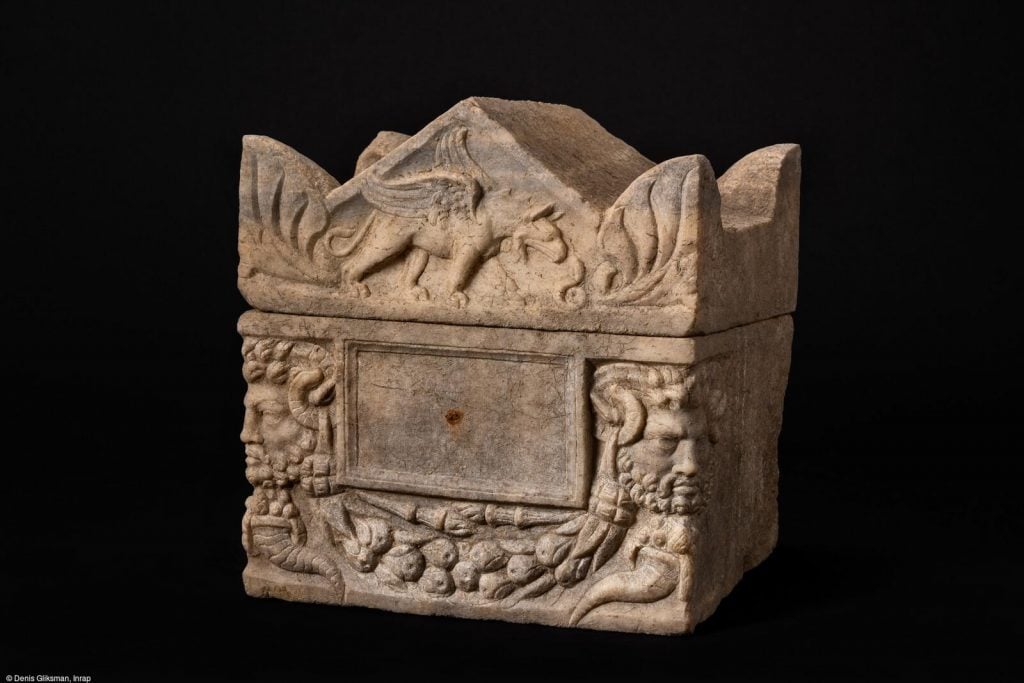
Ossuary chest. Photo: Denis Gliksman, INRAP.
In addition to the 1,880 structures, the necropolis contains more than 1,430 burial sites, making its discovery a valuable contribution for the study of ancient funeral rites.
Those rites changed drastically as the Roman Empire developed and the influence of certain religions waxed and waned. Some of the oldest burial sites at the necropolis were found to contain libation conduits—openings that allowed the living to leave offerings during important festivals like Parentalia. The nine-day celebration of Rome’s ancestors concluded with families sharing meals and making sacrifices near the tombs of their loved ones. During these festivals, they probably used the conduits to “share” their food and drink with those buried inside.
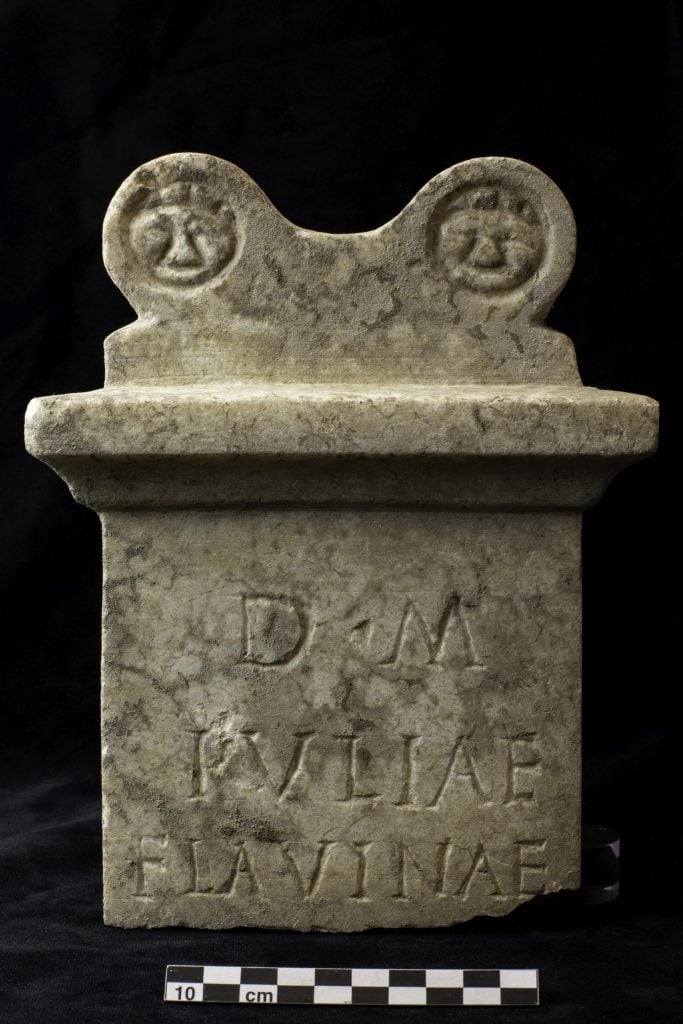
Marble altar with engravings. Photo: Christophe Coeuret, INRAP.
In addition to food and drink, people also left precious items like ceramic vases, small glass furniture, jewelry carved from bone, ivory, or metal, coins, beads, animal teeth, miniature tools, bells, and phallic pendants—objects which would accompany the diseased into the afterlife.
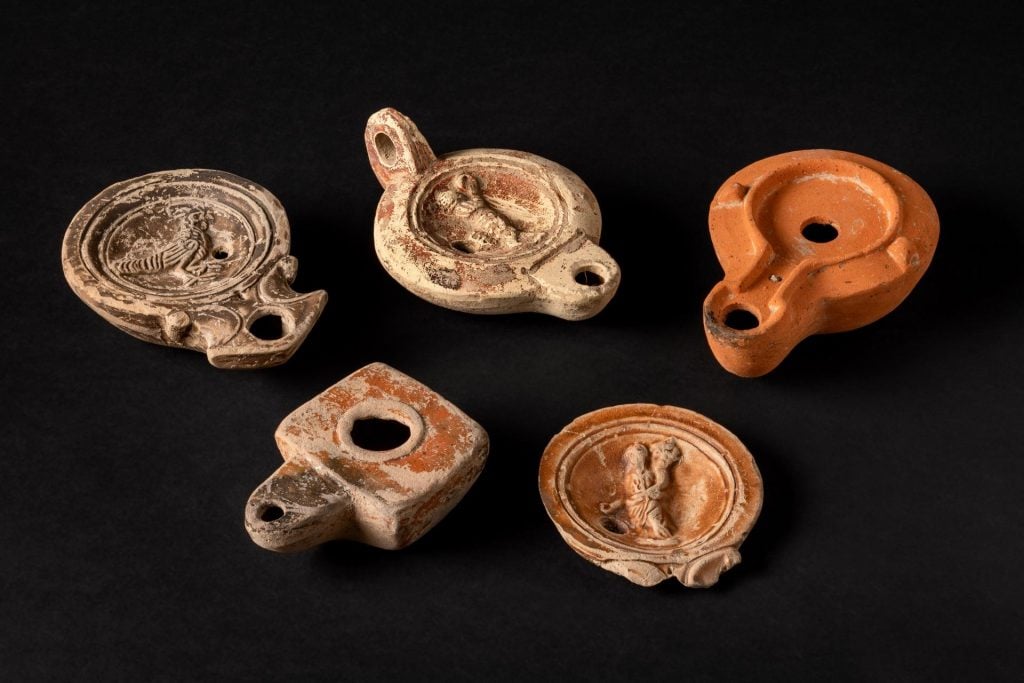
A collection of ambulettes, some with phallic imagery. Photo: Denis Gliksman, INRAP.
Some of the most impressive finds include a marble ossuary chest, a lead ceramic goblet decorated with reliefs of skeletons, a collection of glass perfume vials—frequently used in Roman funerary rituals—and a marble altar with the name Tulia Flavina inscribed on it.
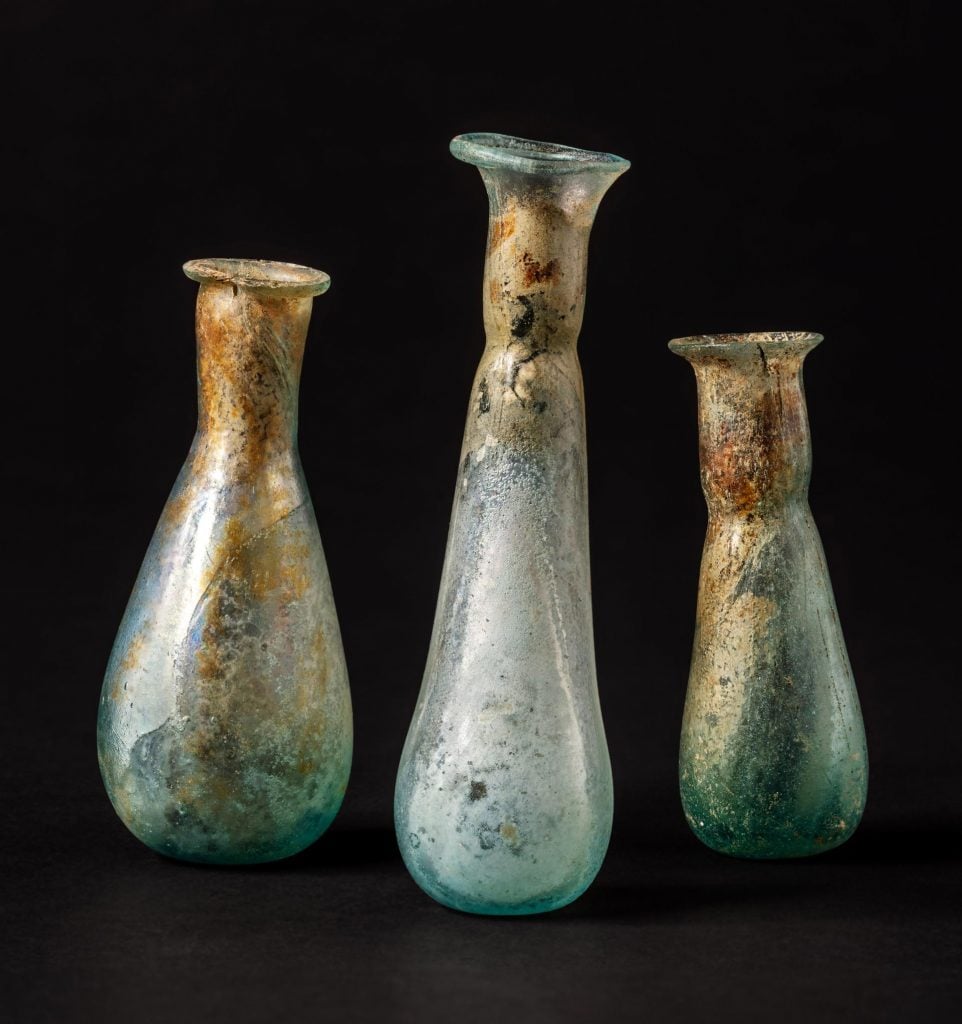
Glass perfume vials. Photo: Denis Gliksman, INRAP.
According to a press release, these and other items recovered from the necropolis are currently being transferred to the Narbo Via museum in Narbonne, which already houses a modest collection of ancient Roman artifacts found in southern France. The discoveries are set to go on display at the Narbo Via in an exhibit scheduled for 2026, curated by Valérie Bel, head of archeological research at INRAP.
Follow Artnet News on Facebook:
Want to stay ahead of the art world? Subscribe to our newsletter to get the breaking news, eye-opening interviews, and incisive critical takes that drive the conversation forward.


